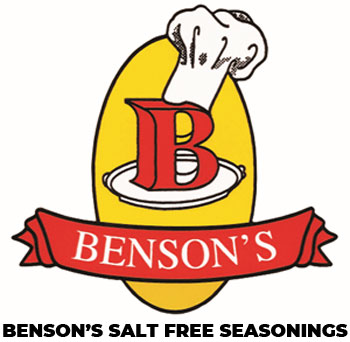Using salt substitutes to make food taste salty should not be your only goal. When eating a low sodium diet, you need flavor too. You will need to learn how to get rid of bland food. This includes learning how to increase flavor by using freshly ground pepper, salt-free seasonings, fresh herbs, fresh vegetables, fruits and citrus, all kinds of vinegar, flavors with a zip like chilies, different cooking techniques and following good low sodium recipes.
When first trying to eat without salt, your food tastes bland. You miss the salt as this is the flavor you are used to. Your taste buds need time to re-train themselves to taste the food and not just the salt. For many, it will take several weeks to several months to accomplish this. Don’t cheat with the salt shaker and the taste bud changes will happen and the changes will happen quicker.
Many doctors tell their patients “No salt substitutes”. That’s because most salt substitutes are made of potassium chloride. Much of the heart and blood pressure medication today is potassium based. Also, you might be supplementing with a potassium product. The doctors monitor you closely, in the beginning, to make sure your medications and potassium are in the right balance. If you add potassium chloride from salt substitutes you could throw off the benefits and be getting too much of this potassium chloride which can adversely affect your heart rate.
Note: Be aware that most low sodium products have potassium chloride, not just salt substitutes.
Your taste buds have trouble distinguishing between salt and sour. You sort of pucker-up either way. So using different kinds of vinegar, lemons and most any citrus will help food taste saltier. These would be considered more natural salt substitutes.
Flavored kinds of vinegar are a great way to add flavor to your food without salt. There are so many kinds of vinegar to try. Just make sure you don’t use seasoned rice vinegar as it has salt and sugar in them. Use unseasoned rice vinegar. There is a multitude of flavorful herbal kinds of vinegar to try. Tarragon is one of the saltiest tasting herbs. Using tarragon vinegar gives an amazing burst of flavor with a nice hint of saltiness. All brands are different so keep searching until you find one you like. Other kinds of vinegar to try would be apple cider vinegar, champagne vinegar, sherry vinegar, red wine vinegar, white wine vinegar and of course, the very popular balsamic vinegar (which tends to be sweeter).
Always keep fresh lemons and/or limes around. You won’t believe the difference they can make in helping your food taste salty. By adding a squeeze of fresh lemon juice at the end of your cooking or even at the table, you’ll find many dishes brighten up with a hint of saltiness. You may have noticed that many Mexican dishes, especially soups have wedges of lime at the table. Just take a little of your food to the side and try a little squeeze of fresh lemon or lime and test and see what the taste difference would be before you add it to your whole plate or pot.
So you see, when searching for salt substitutes, it’s not just about making food taste salty. Although you might think this is the goal in the beginning. The goal should be learning to make your food flavorful with perhaps a hint of saltiness.
